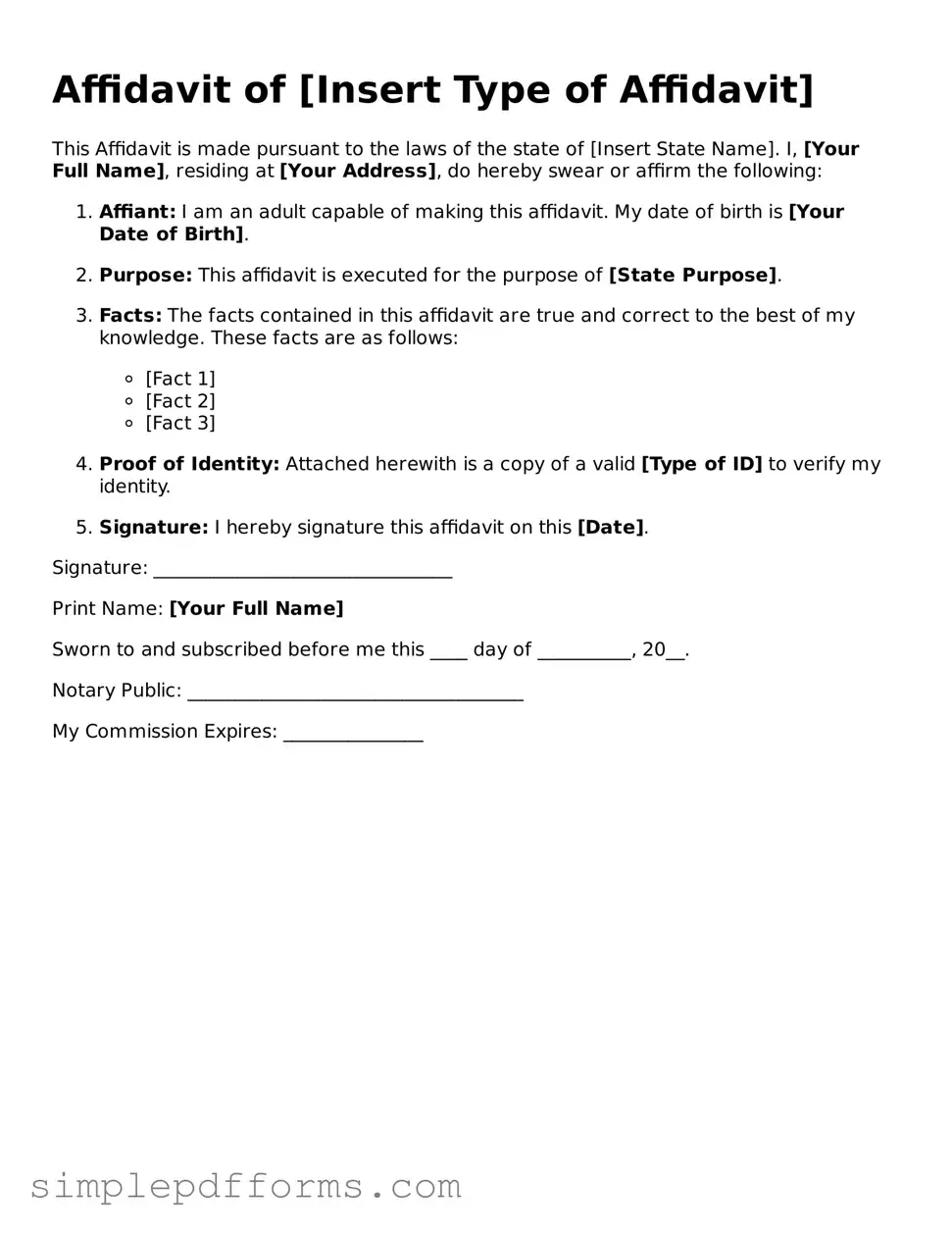When filling out an Affidavit form, it's easy to make mistakes that could lead to delays or even rejection of your document. One common error is failing to provide accurate personal information. This includes your name, address, and other identifying details. Double-checking this information is crucial, as even a small typo can create confusion or invalidate the affidavit.
Another frequent mistake involves not signing the affidavit in the correct location. Many people forget that their signature must be placed in the designated area, often near the end of the document. Additionally, some individuals overlook the requirement for a witness or notary public to sign the affidavit as well. Remember, without these signatures, the affidavit may not be considered valid.
Many also neglect to read the instructions carefully. Each affidavit may have specific requirements depending on its purpose. Skipping this step can lead to missing essential information or failing to include necessary attachments. Always take the time to review the guidelines provided for the form.
Some individuals mistakenly believe that they can use a previous affidavit as a template without making necessary updates. Outdated information can lead to inaccuracies that may affect the validity of the document. It is essential to ensure that all details are current and relevant to the situation at hand.
Another pitfall is using vague language. Affidavits must be clear and precise. Ambiguities can create misunderstandings and may even lead to legal complications. Being specific about the facts being attested to is vital for the document's effectiveness.
Omitting necessary supporting documents is another common error. Depending on the purpose of the affidavit, additional documents may be required to substantiate your claims. Failing to include these can weaken your affidavit and may result in additional requests for information.
Many people also forget to keep a copy of the completed affidavit for their records. This is important for your own reference and can be useful if questions arise later. Always make sure to retain a copy before submitting the document.
Another mistake is not being truthful in the affidavit. Providing false information can lead to serious legal consequences. It's essential to ensure that every statement made in the affidavit is accurate and truthful to the best of your knowledge.
Finally, some individuals rush through the process without taking the time to review their work. A careful review can help catch errors that might otherwise go unnoticed. Taking a moment to proofread can save time and prevent potential issues down the line.
